Learn How to Automate Email Data to Your FTP Account with Email Parsing
Are you receiving hundreds of emails everyday, or week? Stop wasting countless hours manually searching for specific emails or file attachments. With automation software such as email parsing technology, you can quickly capture all of your critical email data and have it exported directly to a folder within your ftp account. All it takes is a few simple steps to set up.
What is FTP?
File Transfer Protocol (or FTP) is a popular networking protocol that transfers multiple files between the client and web server.
FTP has been around for over 25 years now, making it highly compatible with most systems. However, due to its age, it does have its fair share of security and encryption issues, especially around file sharing.
For this reason, many companies that offer FTP client services opt instead to use a secure FTP connection like SFTP and FTPS. To improve security for your business, it is always recommended you opt for an FTP program that establishes a secure online connection to keep your files safe when sharing and uploading files online.
Some of the most popular FTP clients used today include Filezilla, Cyberduck, WinSCP, and Transmit. These integrate seamlessly with Parserr’s software, making email data extraction fast and easy.
Automate Email Data & File Attachments to Your FTP Server Folder
Why Should I Use an Email Parsing Software?
Email parsing has a wide range of real-world uses, including automation, helping to save users both time and money.
If you’d like a deep-dive into email parsing software and its many applications, check out our blog post “What is an email parser?”
1 – Automate Email Data Extraction
Have you ever spent forever trawling through heaps of client email invoices?
That’s where an email parsing tool comes in handy!
Email parsers help you to:
- Automate data extraction for lead generation
- Purchase order records
- Manage your CRM
- Organize your reports
And that’s just a few examples, to name a few!
Modern email parsing tools ensure that you have all the integrations you need to funnel precious data automatically to the services you use safely.
2 – Save Time with Hundreds of Online Integrations
If a future historian were to describe someone from today in one word, patient would not be it!
The average modern professional often has very little time to spare and is constantly looking for the best ways to gain it back.
For example, using tools such as Parserr that utilizes the Zapier integration can help you claim back up to % of your most precious commodity.
It does this by automating the transfer of extracted email data to hundreds of third-party services. An example of this would be transferring email marketing tools to CRM platforms.
In most cases, you’ll only need to activate the correct pre-built integration.
But if you’re someone who enjoys a little more personalization, you can also build your own workflow or “Zap.” It’s as easy as specifying the third-party services you want to send Parserr data to, and that’s it!

3 – Securely Send & Store Email File Attachments to your FTP Server
Imagine a world where storing and sending emails and file attachments to your FTP server required virtually no effort on your part…
With the latest version of Parserr, that fantasy’s already a reality!
Securely store important files to your FTP account in seconds via our new SFTP or SSH File Transfer Protocol integration. Whether you have email text data, webform data, a pdf file, a CSV file, or any other type of text file attachment, Parserr will automatically extract the required data and upload it directly to your FTP account folder.
Still with me? Great.
Now, let’s move on to automating email data to your FTP server using Parserr.
How to Automate Email Data to FTP Server Using Parserr?
Capturing important email attachments to your FTP server folder never got so easy! And with Parserr’s SFTP integration, all of your data is kept safe, storing all backups of sensitive information from your parsed emails.
3 Steps to Automate FTP Data Upload with Parserr
Step 1 – Create a Designated Folder for File Uploads in Your FTP Client
Before letting Parserr automatically export data to your FTP account, you’ll need to create a specific folder where you can store your documents.
For the sake of your sanity, your FTP account is not a place you’ll want disorganized.
Accidentally moving, renaming, or deleting sensitive files can create site errors, leading to crashes and downtimes. Based on industry surveys, Gartner estimated that downtime costs the average business around $5,600 per minute.
In short, a poorly organized FTP account is costly for business, so keep it well organized.
The exact process of creating a specific folder on your FTP account depends on your hosting provider’s control panel (or cPanel) interface.
In this example, we’re using the FTP file manager of SiteGround.
To begin, log in and head to the “Accounts” tab. Then click “Go to cPanel.”
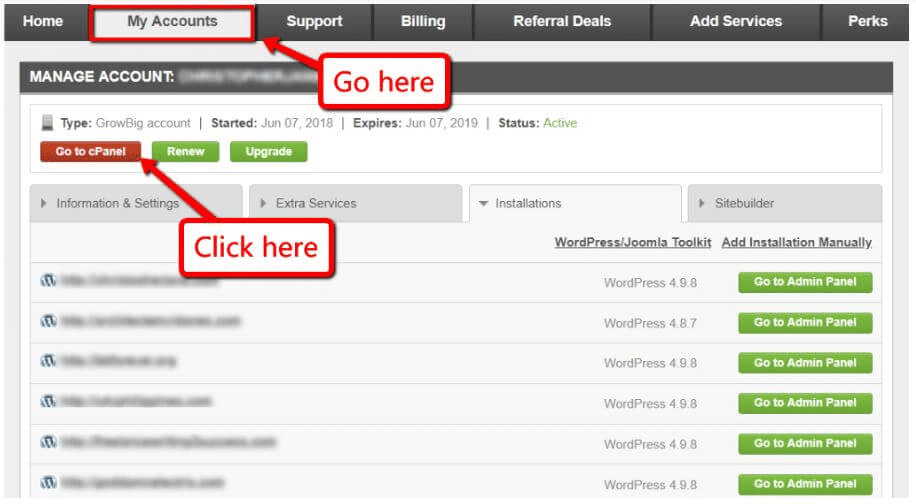
Once in the cPanel, you’ll be presented with several tool categories for tasks like CMS installations, email configurations, and website improvements.
You’ll need the “File Manager” tool, located under the “Files” section.

The File Manager will immediately require you to specify the file directory you want to open in most web hosting platforms.
If you use your hosting account to host multiple websites, make sure you’ve selected the folder you want to use for your Parserr data. Or risk spending your time pulling out your hair on an endless search for your lost files.

From File Manager, you’ll be able to see the “New Folder” button from the File Manager’s main toolbar. Click it and create a new folder.
Note; When selecting a name for your folder, be sure to keep it easy to remember so you’ll always know where to look for your parsed data.
Don’t forget to jot down the location of your folder too! You’ll need it when configuring the SFTP integration on Parserr later.
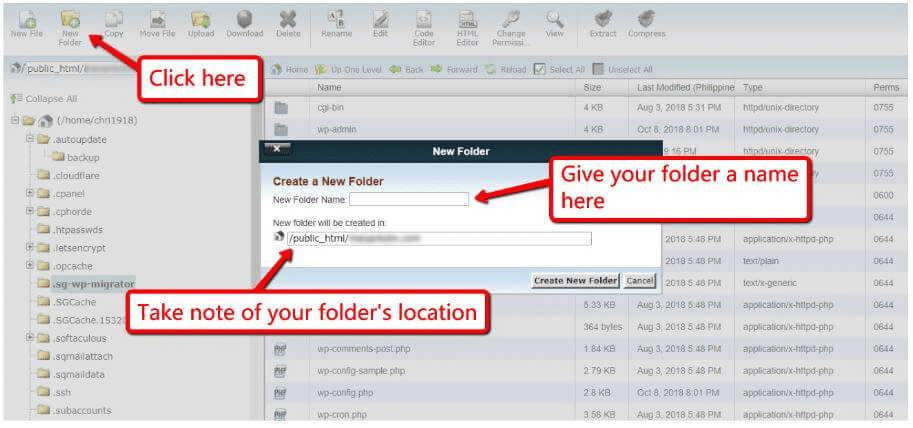
Now, double-check everything’s in working order – make sure you’re able to locate your new folder in the directory you’ve selected.
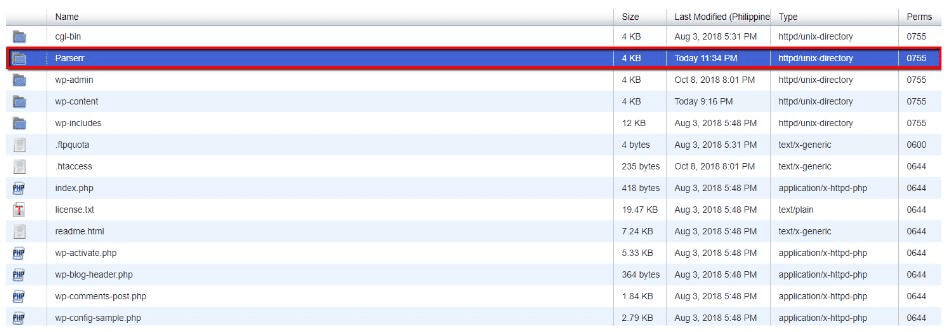
Step 2 – Personalize your Email Parsing Rules
With Parserr’s SFTP integration, all of your extracted email data is automatically exported into a spreadsheet file format.
How does that benefit you? Well, now you can take advantage of every parsing rule available on the Parserr platform, including “Extracting page text from PDF files” and “Creating tables in excel from extracted email data.”
If you’ve already set up your Parserr account, you should already have an idea of how parsing rules work. If not, check out our 3-step extraction guide for a quick rundown on how to configure new rules using a sample email from scratch.
From the main Parserr dashboard, you can get a brief overview of the options under the “Rules” section.

Using this, you can create a new parsing rule.
Click “Add Rule” to bring you to the parsing rule configuration page. Here you can choose the email attribute that contains the information you want to extract. You’ll need to include how you’ll want Parserr to retrieve all necessary data, too.
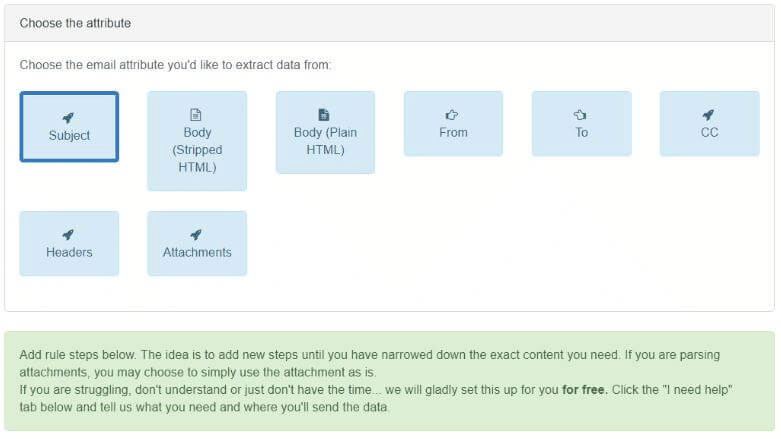
With Parserr, there are various ways to locate the exact information you need from your emails.
Automatically pull in a sender’s email address, extract a line of text from a PDF file document, and so on.
Additionally, our visual Parsing Rule Selection Interface can help you design data extraction workflows. All without having to write a single line of code!
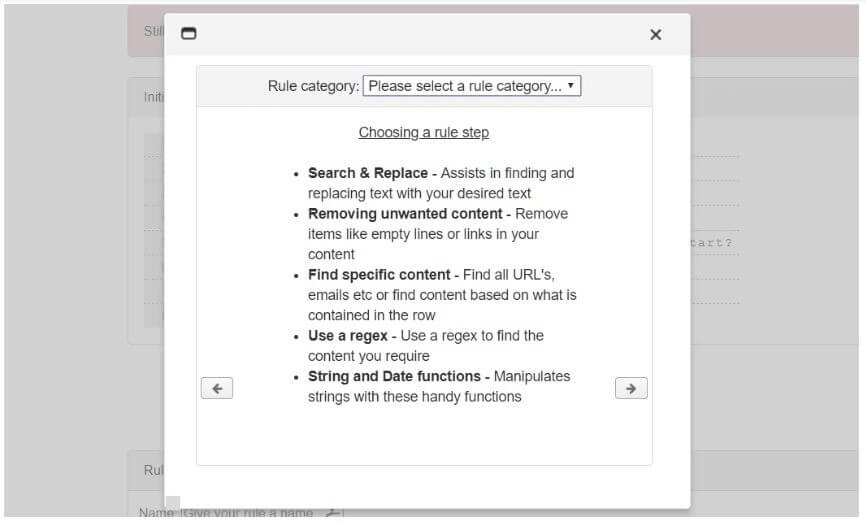
Incorporating a handful of “rule steps” that let you filter out unnecessary PDF file data from emails is now possible thanks to Parserr’s interface.
For example; Suppose you want to extract the names of the users who submit their details using contact forms. In this instance, your sample email may have a line that indicates who sent the message.
This means you should use the “Find rows containing certain text” parsing rule under the “Find content you need” category.
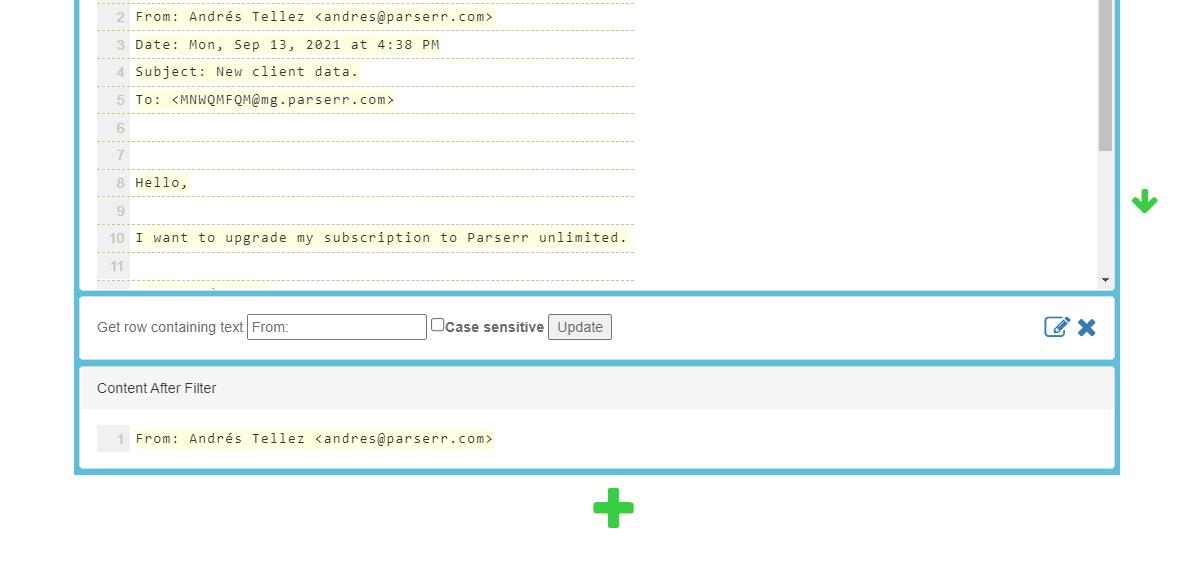
Now enter the appropriate keyword included in the email’s template (usually the “From,” “Sender,” or “Name” fields).
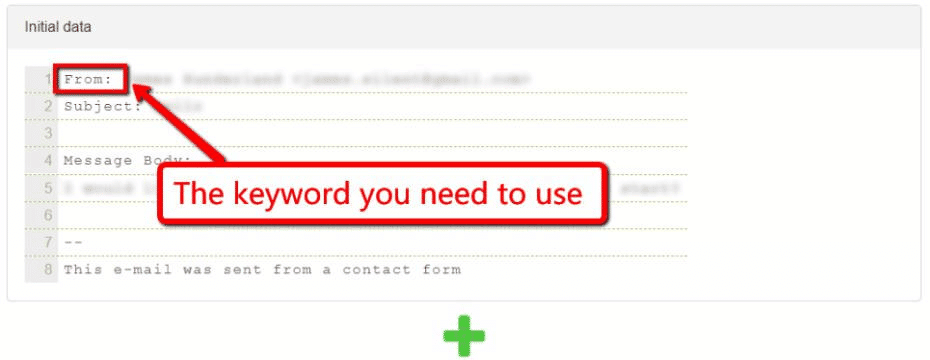
For greater accuracy with your results, include any symbols affixed to your keyword. We’ve entered our keyword in the example above, followed by the colon (as found in email inboxes). This usually does the trick.
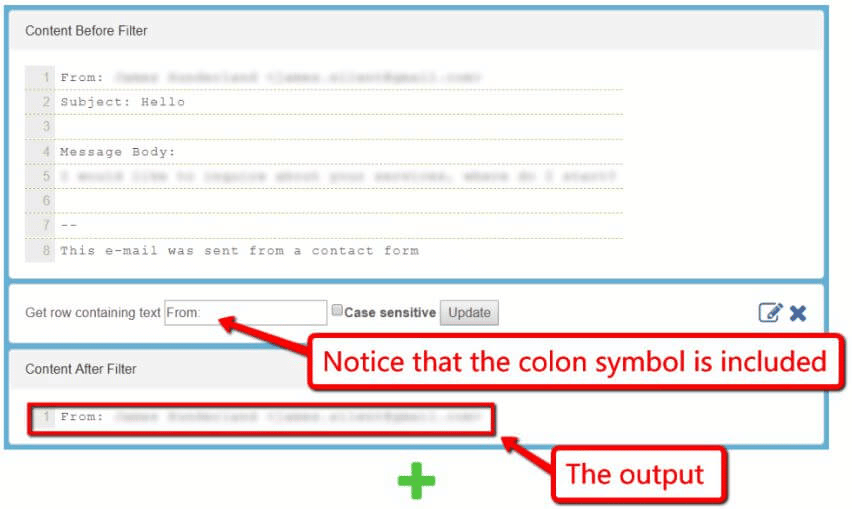
Lastly, you can also remove excess text from your final output using a “Search & Replace” parsing rule.
Simply specify the text you want to delete and replace it with a blank space.
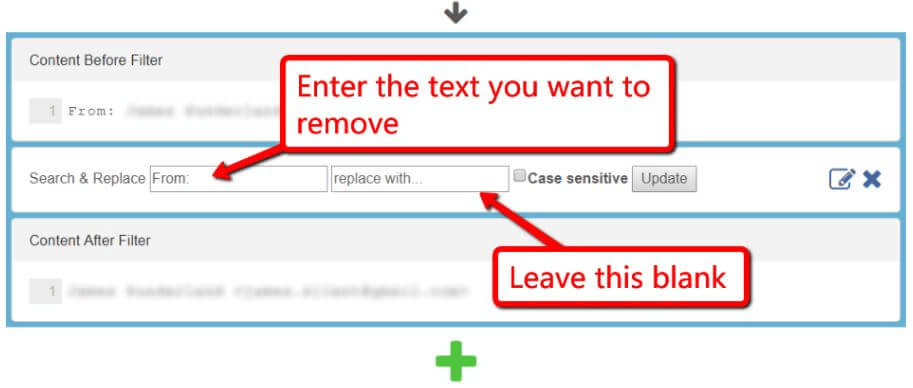
Step 3 – Connect Your FTP Account with Parserr
So you’ve set up your FTP account folder and parsing rules. Awesome!
Now onto our final step; learning how to use the SFTP integration.
From the “Integrations” section of the Parserr dashboard, all you have to do is click “SFTP” on the “Built-In Integrations” row.
To start, head to the”Integrations” section of the Parserr dashboard. From there, select “SFTP” on the “Built-In Integrations” row, pictured below.
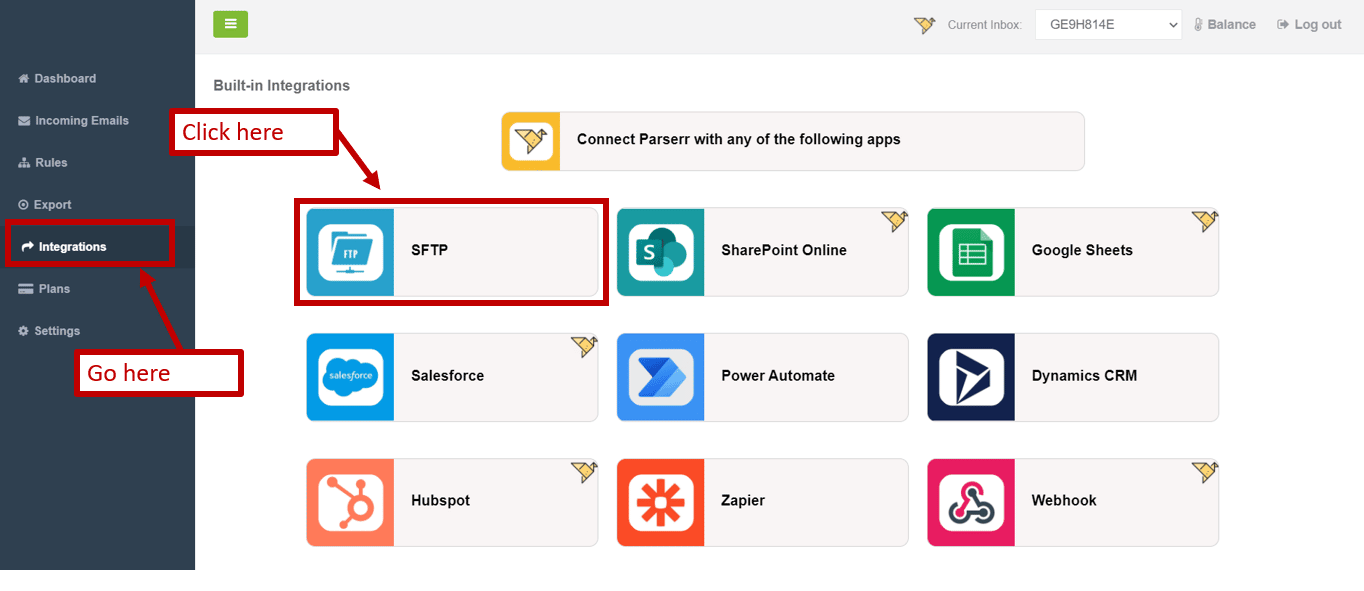
Once you’re finished with that, the rest of the steps are just a matter of supplying the correct details about your FTP account.
Specifically, you’ll need to provide your FTP account’s host, port, username, password, and upload path.
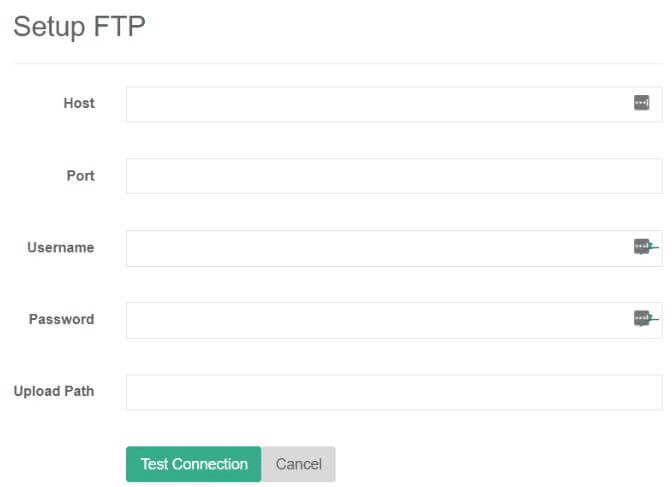
Above is an example of a form you would expect to receive from your web hosting service provider upon launching your site.
Take note, however, that the “Host” field shown isn’t asking for your web host’s domain URL. Rather it’s asking for the IP address assigned to you by your web host.
If, like many, you’re having trouble finding information like your FTP host’s IP address from your cPanel, or your port number, check your inbox.
Details like this are usually found in the confirmation email from your current hosting plan. You’ll usually be able to find everything you’re looking for here, consolidated into an “FTP” section, like:
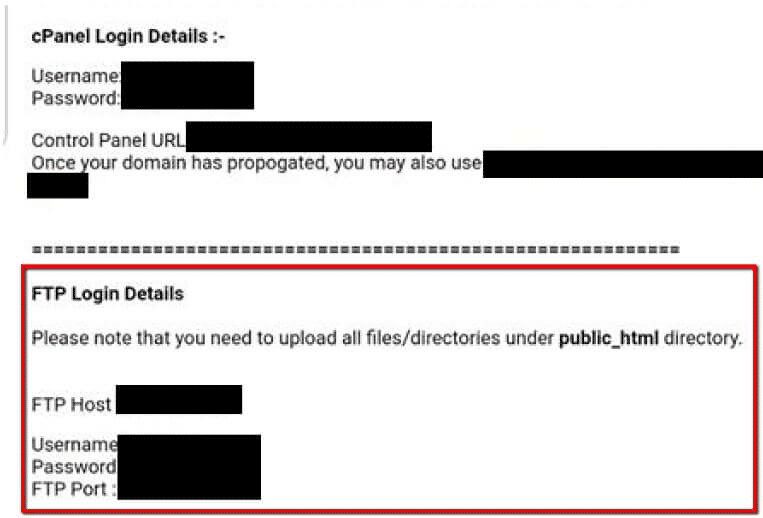
You can always reach out to your web hosting service provider’s customer support team for assistance when in doubt.
For the upload path, just remember to use the location of the folder you created earlier. This essentially instructs Parserr to save your parsed email data to your selected file directory.
And lastly, don’t forget to perform a quick FTP connection test to verify the validity of your FTP account’s information.
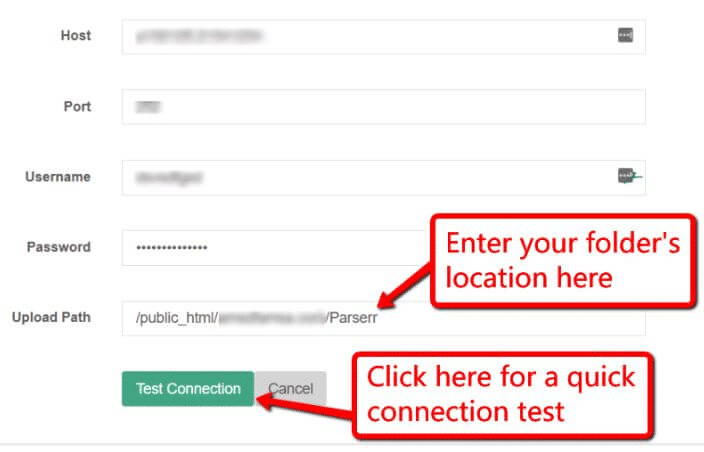
Conclusion
Congratulations! You’re all set up to start saving your email data to your FTP account.
If you’re not already signed up to an FTP to email company, you’re likely considering which providers will best serve your business’s current needs.
Hundreds of forward-thinking businesses have saved on average $15,000 per year by automating time-consuming business processes, like manual data entry. With Parserr, manual data entry is a thing of the past!
Ready to Automatically Save Your Email Data to Your FTP Account?
Creating a Parserr account is quick & easy! We offer several different options depending on the size, and needs of your business. We also offer a FREE version for you to try out. Get up and running in just 3-minutes!











